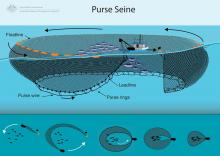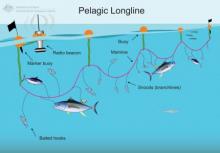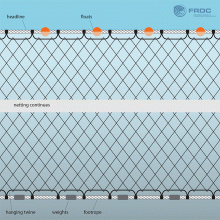Longline, purse seine, gillnet, pole and line and troll fishing gears are employed in pelagic tuna and billfish fisheries. However, there is very little bycatch associated with pole and line fishing and there are very few commercial vessels trolling for tuna. For these reasons, the BMIS focuses on longline, purse seine and gillnet fishing gear.
See also:
- International Seafood Sustainability Foundation 's (ISSF) overview of fishing methods used in tuna fisheries.
- ISSF assessment of the impact of different gear types on bycatch (2024) .
- FAO Fishing Gear Factsheets.
- TMT Introductory Guides to Longline, Purse Seine and Pole and Line fishing (English, Francais, Espanol).


